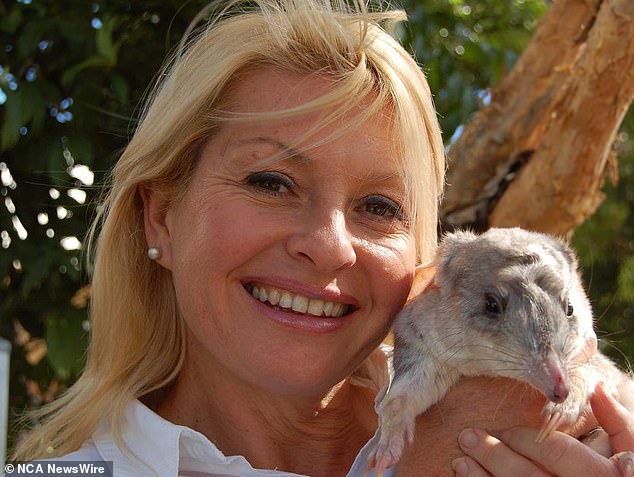Nearly FIFTY new ‘fast-moving, nocturnal’ spider species are discovered in Australia
Forty-eight new species of hunting spiders have been discovered found across Australia.
The spiders are part of the Miturgidae family and prefer a number of different arid habitats, from deserts and eucalyptus forests to coastal heathland.
The Queensland Museum’s research, which spanned decades, was led by arachnologist Robert Raven, who said the discovery of new species was not surprising, but the number discovered was a shock.
Forty-eight new species of hunting spiders have been discovered found across Australia
“The newly described species have a body length of up to 10 millimeters and are nocturnal and fast-moving spiders,” he said.
‘I was surprised how many species were described in this article. I knew there were a lot of them, but the number was much higher than I predicted.”
Former Totally Wild host ranger Stacey Thomson was one of the lucky ones to have a species named after them, the Miturgopelma rangerstaceyae.
Ms. Thomson has worked with Dr. in the past. Raven collaborated on Totally Wild and said it was an honor to have a strain named after her.
“I have spent many hours filming spider stories with Robert and the Queensland Museum team over the years and it has always been a blast,” Ranger Stacey said.
‘I have learned so much about arachnids, their biology and unique behavior and I hope these stories have shown children across Australia what incredible creatures spiders are.’
German research scientist and arachnologist Barbara Baehr, the Miturgopelma baehrae, and photographer and spider enthusiast Caitlin Henderson, the Miturgopelma caitlinae, were others who had species named after them.

Former Totally Wild ranger Stacey Thomson was one of the lucky ones to have a species named after them, the Miturgopelma rangerstaceyae
Jim Thompson, CEO of Queensland Museum Network, praised the meticulous work of Dr Raven and his team.
“Our taxonomists are like detectives in the work they do to formally describe new species for science,” he said.
‘Very often species are acquired and become part of the collection, but they may not be formally known to science. That’s where the work of our researchers, scientists and honorees comes into play.
‘Sometimes this process can be quick, but other times it can take decades and I commend the remarkable work of Dr. Raven and his colleagues on this project.’
jordan.mccarthy@news.com.au | @JordoMc85
